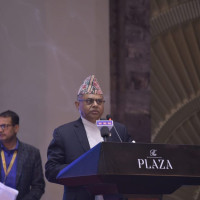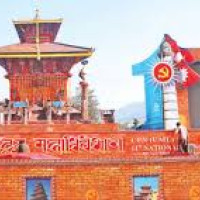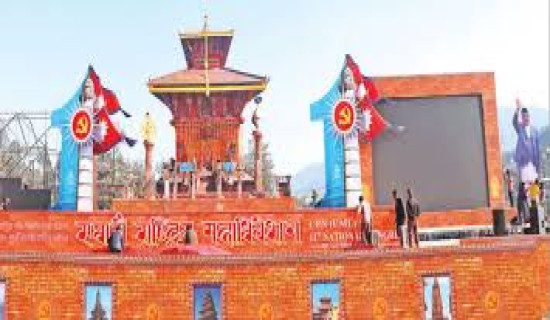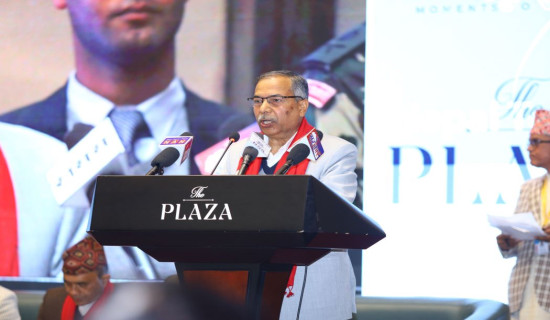- Thursday, 18 December 2025
Waste Management In Valley Time to Adopt Modern Technology
Nawaraj Bhujel
Limited Capacity
The valley generates around 1200 megatonnes of solid waste per day. More than 800mt waste is either dumped or landfilled in two sites: Sisdol and Banchare Danda. Both sites have limited capacity to accommodate waste. Regarding Sisdol, it has already accommodated the valley's waste for seventeen years and its capacity is going to saturate soon while Banchare Danda, a newly developed landfill site, will accommodate waste for a few more years ahead. Before switching to the current sites, the valley used to dump its waste at major locations (i.e., Gokarna) and the rivers’ banks in the valley.
However, due to the rapid urbanisation near these sites and locals' objections later, Sisdol was chosen as an alternative in 2005 AD. Since Sisdol is also heading to its saturation, Banchare Danda is considering the alternative Sisdol. These scenarios indicate that as long as the valley relies on the landfill technique, the demand for new landfill and dumping sites will never end. However, will the locals and stakeholders residing around these sites allow us to use the existing sites up to their full capacity?
Already, they have repeatedly expressed their anger and dissatisfaction with the current technique of waste management by prohibiting the waste carrying tripper several times. They repeatedly complain that the mess of waste in these sites is not only defiling their surroundings but also cause deterioration of their natural environment, social life, public health, and economic activities. More than that, they are repeatedly warning us that they will not allow these sites as long-term landfill or dumping sites in the future. These scenarios alarm us that we should prepare for other alternative techniques of waste management as soon as possible. Despite these, our local governments (except a few) have not shown any commitment to such transformation yet except for a few attractive lines in their respective fiscal policy and programme.
The current technique of waste management does not demand waste segregation at the source as the waste collected at sources is directly transferred to the landfill or dumping sites using automobiles. Due to this, the households feel comfortable in waste storage and delivery, the waste collector feels at ease in waste collection and transfer, and the local government feels the less managerial burden. Tentatively, these characteristics show that this technique is more direct, less time-consuming and more economic. Since the waste collection fee of Rs. 200 to Rs. 450 is also charged per house, this method also induces attractive profit for those, who engage in the waste management business. Due to these reasons, more than 25 private companies are currently engaging in the waste management business with or without the collaboration of respective local governments in the valley. Most metropolitans and municipalities are also welcoming this practice as it has freed them off from most of the responsibility of waste management. These incentives, to some extent, are still encouraging them to stick to this method. However, this method induces several other costs as well.
High Operational Cost
The fixed cost includes the cost related to initial land procurement and purchase, site construction, and infrastructure development. The operational cost includes the cost of repair and maintenance of the site, infrastructure and other equipment, utility bills, purchase of odour surpassing chemicals, staff salary and labourers' wage, and others.
The federal and local governments bear these costs. Concerning current landfill sites, there is also a third type of cost, most of which are not internalized or compensated to the local community. These costs are raised by deteriorating ecosystems, increasing water pollution, air pollution and land pollution, decreasing agricultural production and other economic activities, rising health-related issues (both chronic and acute diseases) and deteriorating social conditions. Such losses and damages have no exact economic value. But certainly, the federal, provincial and local governments should require a massive budget to repair them.
"If you pollute, then you will pay". This principle says that we should take responsibility and ownership of what we produce (especially waste) and its economic, social and environmental externalities. In other words, we are polluters and; are morally and ethically liable to manage our waste and its externalities in our community or city.
If we externalize them, we are liable to compensate the affected parties or community for all damages that our waste causes. However, over the last two decades, we have not only externalized the waste and its impact on different communities but also shown an unwillingness to compensate them completely. If they are fully compensated, then this method of waste management demands massive expenses which makes this technique cost-ineffective (as discussed in the above paragraph).
Economic Value
In the modern era, waste is considered waste if it is dumped or landfilled. But if it is recycled or reduced or reused, then it creates economic value and can be considered a resource. Already, most of the European and North American countries, Japan, China, Singapore, and South Korea are utilizing their massive solid waste as a resource i.e., for the production of CNG, compost and other valuable raw material with negligible environmental and health damages while some countries like India and Indonesia are gradually following it.
In Nepal, Dharan and Bhaktapur are also using a similar approach. However, the rest of the local governments, except few small scale recycling, reduction and composting projects, lack such practice in waste management. The waste generated in the valley constitutes 70.87% organic.
Organic waste can be naturally or mechanically processed to produce compost and CNG. If the entire organic waste is utilised to produce the compost only, the valley receives at least 60mt of compost per day. This amount not only slashes the fertiliser import significantly but also supports the development of organic farming in and around the valley. The reuse and recycling value of inorganic waste is also attractive. Our waste includes around 0.54% rubber, 8.51% paper, 3.02% cloth, 2.5% glass, 0.92% metal, 0.12% leather, 9.18% plastic, and 4.3% others. Except for others, each waste can be processed separately to make their respective raw materials, which are immediately consumed at good market prices in the current market. Their scarp can also be sold at an attractive market price. In nutshell, the waste generated inside the valley can create huge economic value for different stakeholders. Despite this, we are still lagging to capitalise on them.
In nutshell, we should consider the current time as a transitional phase from our old technique of waste management: dumping and landfilling to the new technique: recycling, reuse and reduction. For that reason, the central government, provincial government, local government, community and other stakeholders should welcome, appreciate, encourage and support any effort that targets such transformation. Currently, we, all, are dreaming of a clean and waste-free society ahead. Only collaboration, cooperation and coordination among all of us can lead us to our dream quickly.
(The writer is a lecturer of economics at Madan Bhandari Memorial College)














